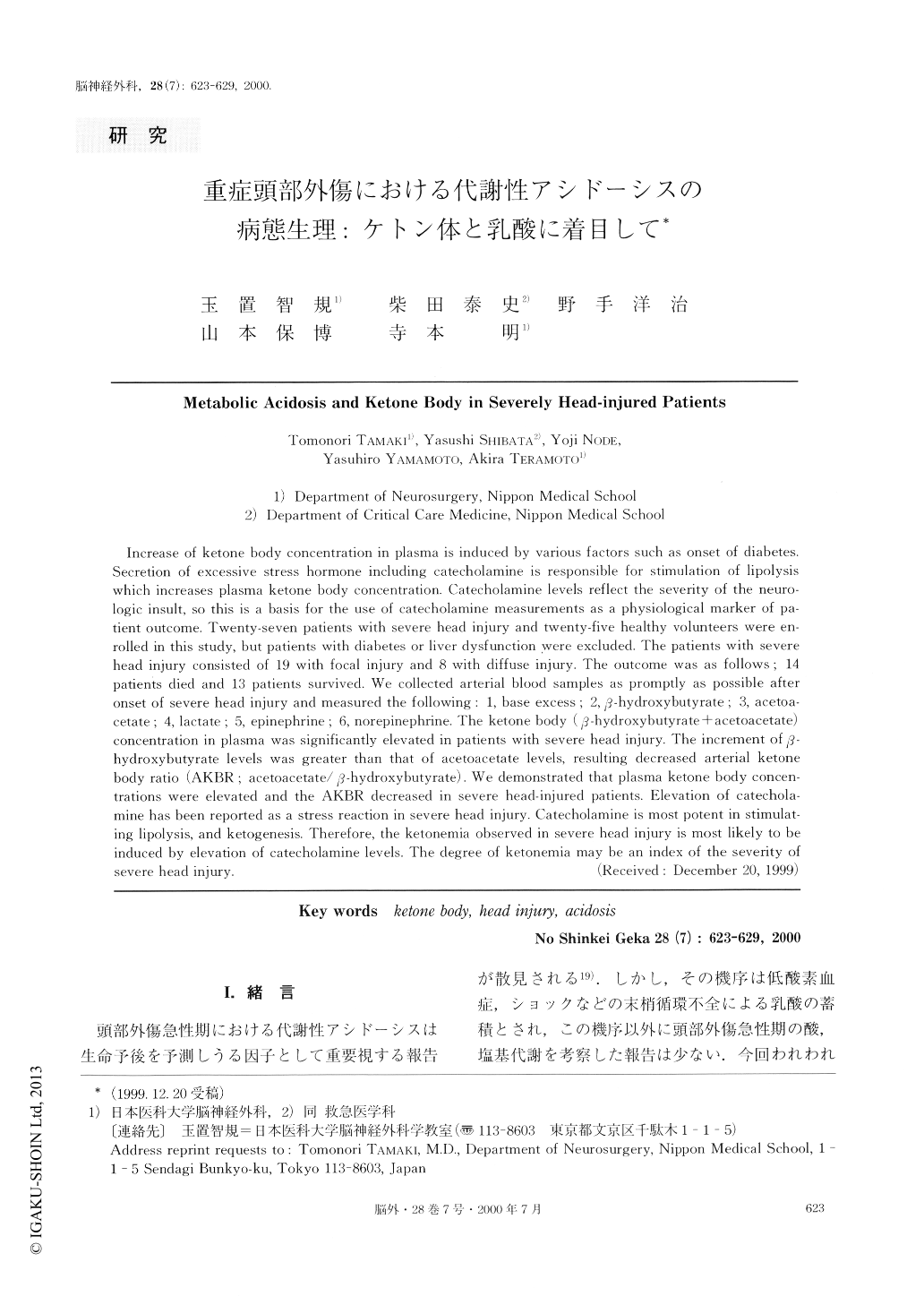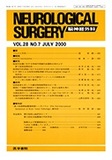Japanese
English
- 有料閲覧
- Abstract 文献概要
- 1ページ目 Look Inside
I.緒言
頭部外傷急性期における代謝性アシドーシスは生命予後を予測しうる因子として重要視する報告が散見される19).しかし,その機序は低酸素血症,ショックなどの末梢循環不全による乳酸の蓄積とされ,この機序以外に頭部外傷急性期の酸,塩基代謝を考察した報告は少ない.今回われわれは内因性有機酸であるケトン体,乳酸,および,肝細胞ミトコンドリアの酸化還元状態(redox state)を反映する指標である動脈血ケトン体比(arterial ketone body ratio以下AKBR)に着目したところ,重症頭部外傷急性期には総ケトン体の上昇,AKBRの低下を観察し,ケトン体の代謝がその病態に影響を与えていると考えたので報告する.7.
Increase of ketone body concentration in plasma is induced by various factors such as onset of diabetes. Secretion of excessive stress hormone including catecholamine is responsible for stimulation of lipolysis which increases plasma ketone body concentration. Catecholamine levels reflect the severity of the neuro-logic insult, so this is a basis for the use of catecholamine measurements as a physiological marker of pa-tient outcome. Twenty-seven patients with severe head injury and twenty-five healthy volunteers were en-rolled in this study, but patients with diabetes or liver dysfunction were excluded. The patients with severe head injury consisted of 19 with focal injury and 8 with diffuse injury. The outcome was as follows; 14 patients died and 13 patients survived. We collected arterial blood samples as promptly as possible after onset of severe head injury and measured the following: 1, base excess; 2, β-hydroxybutyrate; 3, acetoa-cetate; 4, lactate; 5, epinephrine; 6, norepinephrine. The ketone body (β-hydroxybutyrate+acetoacetate) concentration in plasma was significantly elevated in patients with severe head injury. The increment of β- hydroxybutyrate levels was greater than that of acetoacetate levels, resulting decreased arterial ketone body ratio (AKBR; acetoacetate/β-hydroxybutyrate). We demonstrated that plasma ketone body concen-trations were elevated and the AKBR decreased in severe head-injured patients. Elevation of catechola-mine has been reported as a stress reaction in severe head injury. Catecholamine is most potent in stimulat-ing lipolysis, and ketogenesis. Therefore, the ketonemia observed in severe head injury is most likely to be induced by elevation of catecholamine levels. The degree of ketonemia may be an index of the severity of severe head injury.

Copyright © 2000, Igaku-Shoin Ltd. All rights reserved.


